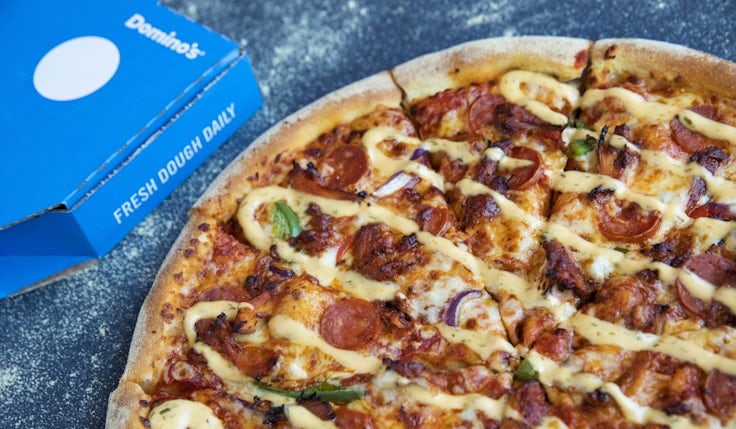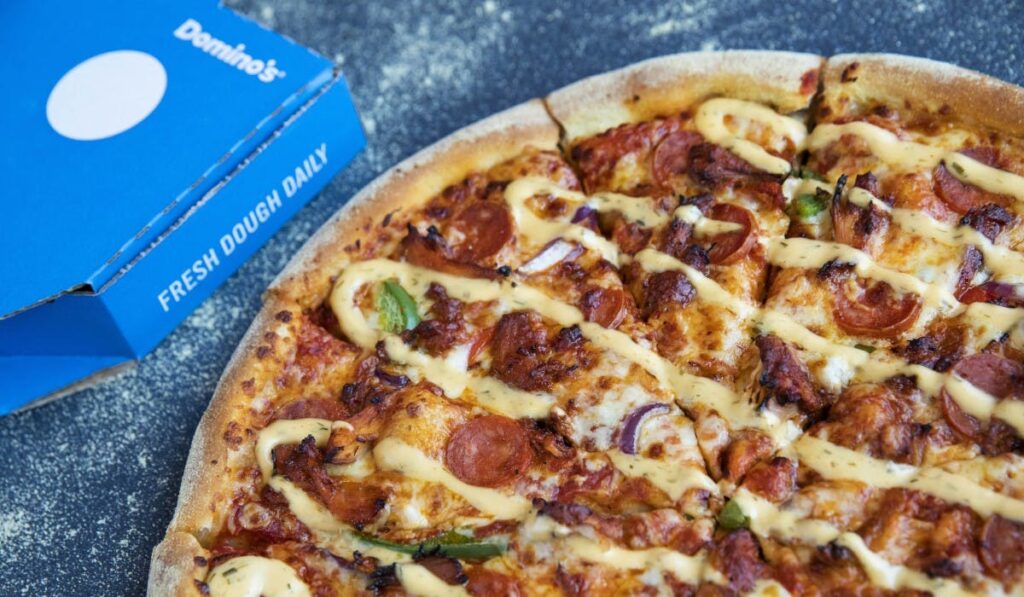 Domino’s Pizza says its loyalty initiative acts to “widen the moat” on its business, bolstering its position as market leader by driving frequency and retention.
Domino’s Pizza says its loyalty initiative acts to “widen the moat” on its business, bolstering its position as market leader by driving frequency and retention.
The pizza delivery brand has been trialling a loyalty scheme since August 2024, and, last month, moved into the second phase of the test, with a potential full roll-out earmarked for next year.
Speaking to investors today (11 March) CEO Andrew Rennie said that the first phase, involving 630,000 users, had “gone really well”, and that the brand was excited to see what it could achieve with the next stage, which involves around 3 million users.
“Loyalty widens that moat on our business, it makes it even… tougher to penetrate our business, because we have all these people inside our ecosystem,” he said. “We can talk to [customers] more frequently. We can reward them now, and having that knowledge allows us to drive incrementality in frequency.”
We focus every day about what we can do better. I can’t control what competitors do, but I can control what we do.
Andrew Rennie, Domino’s Pizza
Rennie was upbeat about the results of the first phase, reporting there are many “less frequent” consumers “who are really engaging” with the offers in the loyalty app, and that it’s seeing some “incrementality” in frequency, particularly among medium to less frequent users.
However, he cautioned against proceeding too quickly with the roll out as it could lead to the brand “tripping over” itself, adding that the company was now “dialling it up slowly”.
The pizza chain CEO had previously sounded a cautious note about rushing into loyalty schemes. Speaking back in late 2023 prior to the launch of the trial, Rennie told investors he had seen examples in the past where brands had used loyalty schemes as “a short-term sugar rush”, and that he didn’t want to overly hurry the business’s proposition.
‘We run our own race’: Domino’s CEO asserts brand is not vulnerable to consumer sentiment
He was also asked by an investor about pizza delivery rival Papa John’s UK, which has just revamped its loyalty proposition, and whether that was something he was watching.
Rennie responded that he wasn’t focusing on competitor activity: “We focus every day about what we can do better. I can’t control what competitors do, but I can control what we do.”
He added that this was “working”, citing growing market share.
Value still key
Domino’s UK grew system sales by 2% in 2024, reaching £1.57bn in the year. It also met its goal of returning its delivery orders to growth, it said.
Looking to this year, Rennie predicted that the macro-environment will be rocky but was upbeat about the brand’s health.
“I’m steering the ship into some pretty strong headwinds this year, and the ship is in really good shape,” he said.
Given this, the consumer will be seeking out value, he noted.
“Value isn’t just representing prices today, it’s representing the quality of the product, which we’re extremely proud of, and the quality of the service,” he said, adding that Domino’s is confident in all these areas.
Looking at YouGov BrandIndex, Domino’s Pizza is outperformed by rivals Pizza Hut and Papa John’s in terms of value perceptions. However, Domino’s has been improving its value perceptions in recent months. Its value score for the last six months was -8.2, up from -10.6 in the previous period.
Domino’s identifies marketing as ‘core pillar of competitive advantage’ in updated growth plan
This year, the brand will focus on further driving value, whether that’s through campaigns, deals like its £4 lunch offer, or driving collection orders.
Collection offers consumers a cheaper deal than having Domino’s delivered and plays to a value-oriented consumer. Rennie highlighted Domino’s scale and physical availability, meaning it is close to consumers, allowing them to collect more easily versus competitors.
He indicated that, despite being the market leader and 40 years old in the UK, there is still a lot of headroom to grow physical availability. He said there is still around 15% of homes in the UK and Ireland that cannot get a Domino’s Pizza delivered.
The business has seen strong responses as it expands into smaller territories like villages and smaller towns, indicating strong demand for the brand, Rennie said.
“It’s just goes to show the pent-up demand of the brand in these small towns, so we can’t wait to take the brand to these people that have been waiting for 40 years to come to their villages,” he said.


